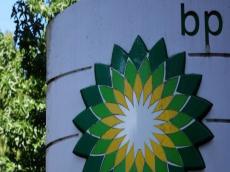|
|
TODAY.AZ / World news
bp commits massive funding to Gulf region operations
29 September 2025 [21:40] - TODAY.AZ

by Alimat Aliyeva
British oil and gas giant bp plc announced on Monday that it has approved the Tiber-Guadalupe deepwater project in the Gulf of Mexico—a region the company now refers to as the "Gulf of America", following a renaming by the U.S. government in May. This project, combined with the earlier Kaskida development, brings BP’s total investment in the region to approximately $10 billion, Azernews reports, citing foreign media.
“Tiber-Guadalupe represents a significant step forward in our efforts to unlock the potential of the Paleogene in the Gulf of America, building on decades of bp’s experience in the region,” said Gordon Birrell, BP’s Executive Vice President for Production and Operations. “Together with our Kaskida project in the Paleogene, we expect Tiber-Guadalupe to become another world-class development,” he added.
The Tiber-Guadalupe project, with an estimated cost of $5 billion, will become bp’s seventh production hub in the Gulf of Mexico. Once operational, all seven facilities are expected to help bp boost its offshore output capacity to over 400,000 barrels of oil equivalent per day by 2030.
Both Tiber-Guadalupe and Kaskida target the Paleogene play, a deeply buried geological formation that holds some of the most technically challenging but resource-rich oil reserves in the region. These developments mark BP's increasing focus on high-margin, lower-emission barrels, as the company tries to balance its traditional oil operations with its broader energy transition strategy.
The "Gulf of America" renaming by the U.S. government, though largely symbolic, is seen by analysts as part of a strategic branding shift to emphasize American offshore energy dominance and to attract further investment in domestic energy infrastructure.
With this latest approval, bp is signaling a strong commitment to U.S. energy production, even as it invests in renewables and low-carbon technologies globally.
URL: http://www.today.az/news/regions/262342.html
 Print version
Print version
Connect with us. Get latest news and updates.
See Also
- 29 September 2025 [23:30]
Saudi Arabia selected for Kia’s PV5 pilot program - 29 September 2025 [22:07]
China launches visa for foreign IT - 29 September 2025 [21:40]
bp commits massive funding to Gulf region operations - 29 September 2025 [21:05]
UK authorities intend to build new cities - 29 September 2025 [20:34]
China launches 2 Earth-observation satellites - 29 September 2025 [08:00]
China launches low Earth orbit satellite group - 28 September 2025 [20:00]
Erdogan’s US visit seen as potential turning point in Ankara–Washington ties [OPINION] - 28 September 2025 [13:10]
Moldova holds parliamentary elections - 28 September 2025 [12:00]
Nikol Pashinyan: TRIPP route to have both regional and global significance and impact - 28 September 2025 [09:00]
More drones spotted near Danish military bases
Most Popular
 Erdogan’s US visit seen as potential turning point in Ankara–Washington ties [OPINION]
Erdogan’s US visit seen as potential turning point in Ankara–Washington ties [OPINION]
 Ministry of Economy staff honor martyrs at Victory Park on Memorial Day
Ministry of Economy staff honor martyrs at Victory Park on Memorial Day
 Syrian court issues arrest warrant for former president Bashar al-Assad
Syrian court issues arrest warrant for former president Bashar al-Assad
 Chilean senate delegation visits Shusha and Khankendi on Remembrance Day
Chilean senate delegation visits Shusha and Khankendi on Remembrance Day
 Nikol Pashinyan highlights importance of regional cooperation for Peace in South Caucasus
Nikol Pashinyan highlights importance of regional cooperation for Peace in South Caucasus
 Patriotic war, national dignity, eternal remembrance [OPINION]
Patriotic war, national dignity, eternal remembrance [OPINION]
 Armenian PM: I am happy to report to international community that peace established between Armenia and Azerbaijan
Armenian PM: I am happy to report to international community that peace established between Armenia and Azerbaijan
